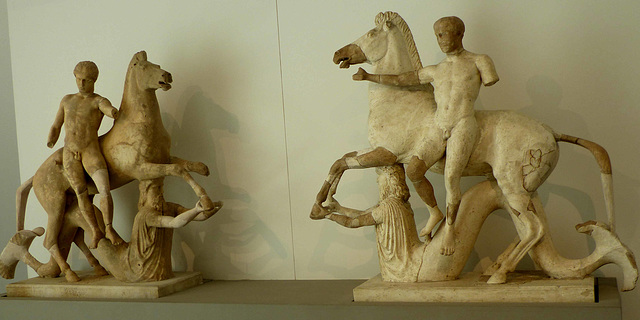Reggio Calabria - Museo Archeologico Nazionale Di…
Reggio Calabria - Museo Archeologico Nazionale Di…
Reggio Calabria - Museo Archeologico Nazionale Di…
Reggio Calabria - Museo Archeologico Nazionale Di…
Reggio Calabria - Museo Archeologico Nazionale Di…
Reggio Calabria - Museo Archeologico Nazionale Di…
Reggio Calabria
Reggio Calabria - Palazzo Pellicano
Reggio Calabria - Stretto di Messina
Tindari - Santuario di Tindari
Vulcano
Patti - Cattedrale di San Bartolomeo
Patti - Cattedrale di San Bartolomeo
Patti - Cattedrale di San Bartolomeo
Cefalù
Cefalù - Rajmondi Parruccieri
Cefalù - Duomo di Cefalù
Cefalù - Duomo di Cefalù
Cefalù
Cefalù
Cefalù - Duomo di Cefalù
Monreale - Duomo di Monreale
Monreale - Duomo di Monreale
Reggio Calabria - Museo Archeologico Nazionale Di…
Reggio Calabria - Museo Archeologico Nazionale Di…
Reggio Calabria - Museo Archeologico Nazionale Di…
Reggio Calabria - Monumento ai Caduti di Reggio Ca…
Münster - LWL-Museum
Münster - LWL-Museum
Reggio Calabria - Duomo di Reggio
Gerace - Maria del Mastro
Gerace - Maria del Mastro
Gerace - San Francesco d'Assisi
Gerace - San Francesco d'Assisi
Gerace - San Francesco d'Assisi
Gerace - San Giovannello
Gerace - San Giovannello
Gerace - Duomo di Gerace
Gerace - Duomo di Gerace
Gerace - Duomo di Gerace
Gerace - Duomo di Gerace
Bivongi - Monastero di San Giovanni Theristis
Bivongi - Monastero di San Giovanni Theristis
Bivongi - Monastero di San Giovanni Theristis
Bivongi - Monastero di San Giovanni Theristis
Location
See also...
Keywords
Authorizations, license
-
Visible by: Everyone -
All rights reserved
-
15 visits
Reggio Calabria - Museo Archeologico Nazionale Di Reggio Calabria


Reggio Calabria is the largest city in Calabria. It has an estimated population of nearly 200,000. Reggio is the oldest city in the region, and during ancient times, it was an important and flourishing colony of Magna Graecia. It is separated from the island of Sicily by the Strait of Messina. Today Reggio has a modern urban system, set up after the catastrophic earthquake of 1908, which destroyed most of the city. The seismicity is caused by Reggio being on the Eurasian Plate near the faultline where it meets the African Plate that runs through the strait, dividing the two European regions of Calabria and Sicily into two different tectonic regions.
Reggio, located opposite Messina, always had strategic importance. Invasions by the Vandals, the Lombards, and the Goths occurred in the 5th–6th centuries. Then, under Byzantine rule, it became a metropolis of Byzantine possessions in Italy. Until the 15th century, Reggio was one of the most important Greek-rite Bishoprics in Italy. The Arabs occupied Reggio in 918. For brief periods in the 10th–11th centuries, the city was ruled by the Arabs and it became part of the Emirate of Sicily. In 1005, a Christian fleet coming from Pisa sacked the city and massacred all the Saracens to the great jubilation of the local population. In 1060 the Normans, under Robert Guiscard and Roger I of Sicily, captured Reggio. In 1194 Reggio and the whole of southern Italy went to the Hohenstaufen, who held it until 1266. In 1234 the town fair was established by decree of King Frederick II.
The Palazzo Piacentini houses the fantastic "Museo Archeologico Nazionale Di Reggio Calabria" aka "Museo Nazionale della Magna Grecia".
The Dioscuri (Castor and Pollux) in position to get off the horses supported by Tritons. 5th century BC
Reggio, located opposite Messina, always had strategic importance. Invasions by the Vandals, the Lombards, and the Goths occurred in the 5th–6th centuries. Then, under Byzantine rule, it became a metropolis of Byzantine possessions in Italy. Until the 15th century, Reggio was one of the most important Greek-rite Bishoprics in Italy. The Arabs occupied Reggio in 918. For brief periods in the 10th–11th centuries, the city was ruled by the Arabs and it became part of the Emirate of Sicily. In 1005, a Christian fleet coming from Pisa sacked the city and massacred all the Saracens to the great jubilation of the local population. In 1060 the Normans, under Robert Guiscard and Roger I of Sicily, captured Reggio. In 1194 Reggio and the whole of southern Italy went to the Hohenstaufen, who held it until 1266. In 1234 the town fair was established by decree of King Frederick II.
The Palazzo Piacentini houses the fantastic "Museo Archeologico Nazionale Di Reggio Calabria" aka "Museo Nazionale della Magna Grecia".
The Dioscuri (Castor and Pollux) in position to get off the horses supported by Tritons. 5th century BC
aNNa schramm has particularly liked this photo
- Keyboard shortcuts:
Jump to top
RSS feed- Latest comments - Subscribe to the comment feeds of this photo
- ipernity © 2007-2024
- Help & Contact
|
Club news
|
About ipernity
|
History |
ipernity Club & Prices |
Guide of good conduct
Donate | Group guidelines | Privacy policy | Terms of use | Statutes | In memoria -
Facebook
Twitter

Sign-in to write a comment.